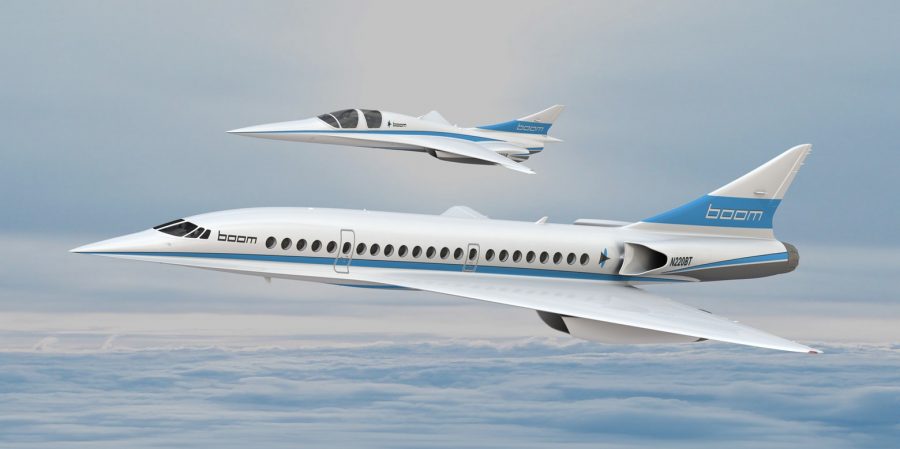New supersonic aircraft: boom or bust?
Imagine a plane that could go from New York to London in just three and a half hours.
Richard Branson, the owner and founder of The Virgin Group revealed a prototype aircraft that can travel at supersonic speeds. A Denver company named Boom will help develop and produce the aircraft.
The Concorde was a supersonic aircraft that was developed in the late 1960s, but was a complete failure due to engine failures and the price. According to CNN, the Concorde will be coming back by 2019 making them a major competitor for Branson. Branson argues that his spaceship company will help Boom provide speed, and luxury for an “affordable” price of $5,000 per flight.
“60 years after the dawn of the jet age, we’re still flying at 1960’s speeds,” said Scholl. This is Scholl’s main motif for making the supersonic aircraft, because jet technology, and the speed of jets has not made any significant advances since their invention.
According to Fox News, the CEO of Boom Blake Scholl stated that test flights will begin next year in southern California, and the aircrafts should be available by 2023.
“I don’t know a single person who wouldn’t want to get there in half the time, rather than have some free champagne,” he said. “It won’t be a bucket-list purchase any more. There is a huge market and the margins are enormous.” This means that the company has confidence that people will be able to afford the price per flight. If the aircraft is a success on the domestic market, the future for aircrafts will be changed forever.
The planes will be composed of a lightweight carbon fiber material which will make the planes very fuel efficient.
According to CNN, the passenger aircraft will have a cruising speed of mach 2.2 or around 1,451 miles per hour. The speed for a regular aircraft today is around mach 0.85 or 650 mph. The aircraft will also be able to carry up to 55 passengers, and the future flights will be from New York to London, and San Francisco to Tokyo.
The main issue with supersonic aircraft is the US government. According to the FAA’s Noise Policy on Supersonics: “supersonic flight over land by civil aircraft has been prohibited by regulation in the United States.” When a supersonic aircraft breaks the sound barrier it makes a supersonic boom that can be heard from hundreds of miles away. When the Concorde was being developed, the US government places restrictions on going supersonic over land, which limited the flight paths for the aircraft greatly. Currently Boom and its engineers are working to make the sonic boom less loud so that they can fly at top speeds over land. According to NASA’s website, they conducted an experiment in 2001 where they modified a F-5E Tiger II aircraft by making the fuselage longer. Their experiments concluded that the modified aircraft created a sonic boom that was 18% quieter than usual.

